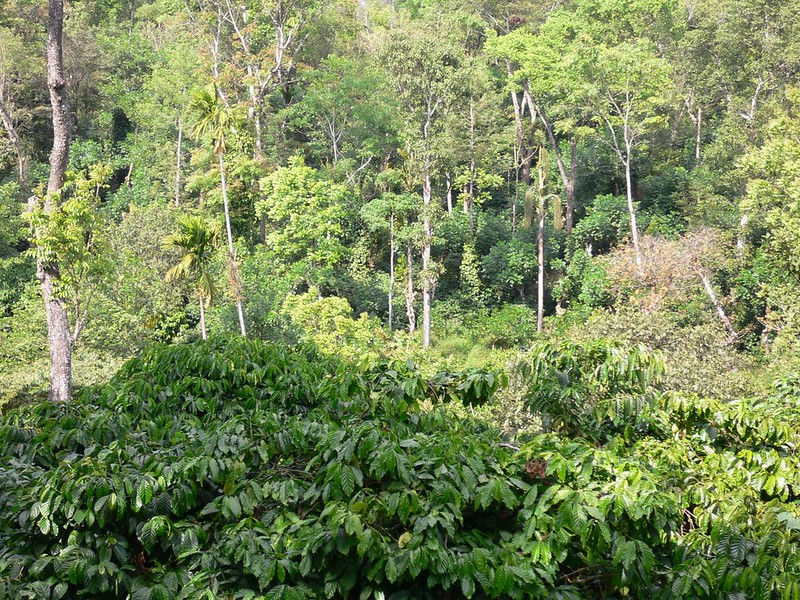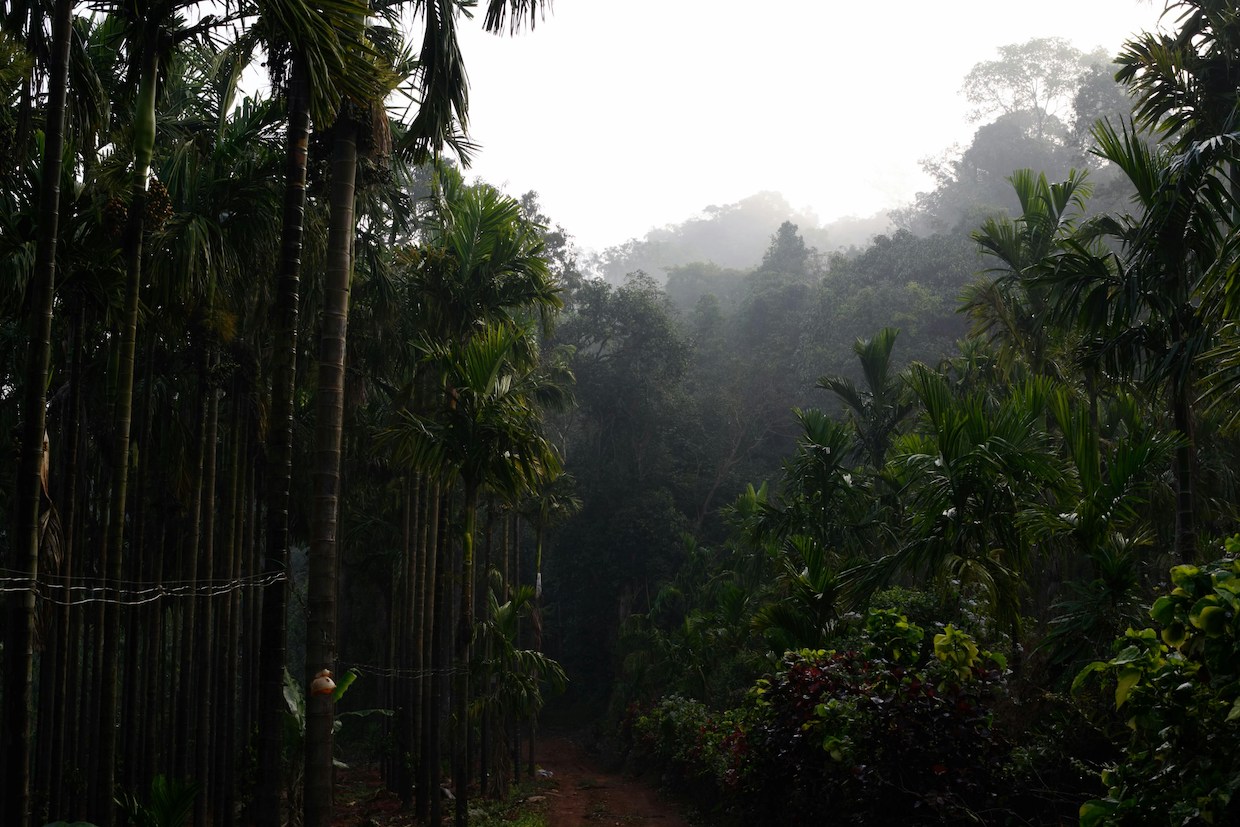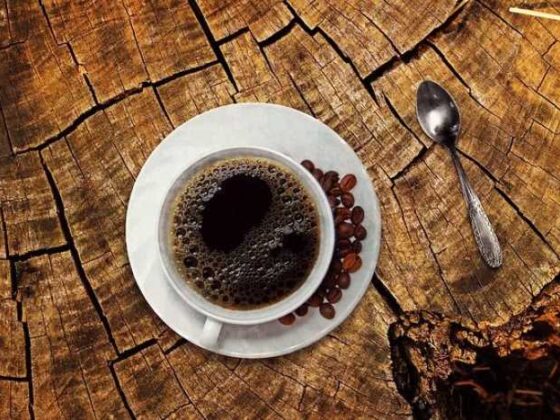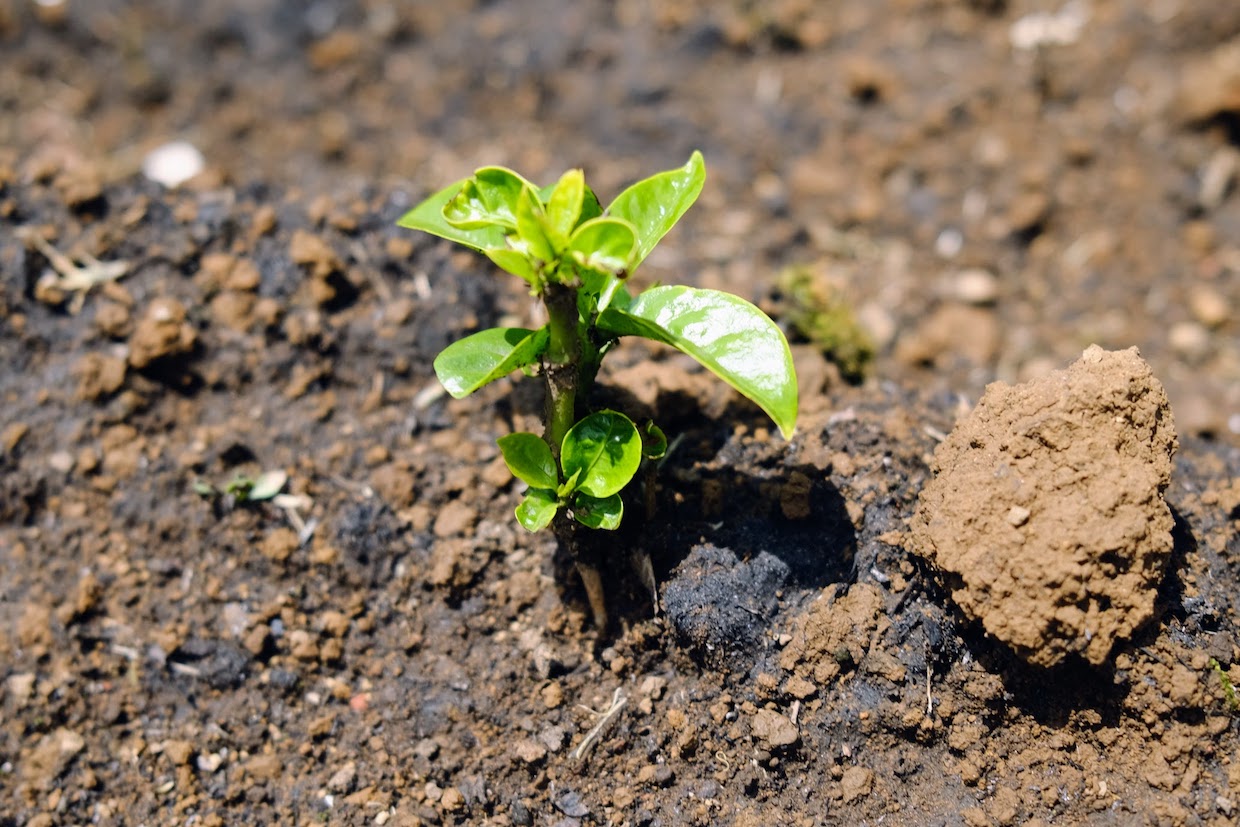- In coffee agroforests that use a diversity of native tree species for shade, seeds that are normally cleared by farmers can be collected instead, new research proposes.
- The numbers of restoration and conservation relevant species found in the coffee farms surveyed were higher than those available in local public nurseries.
- Limiting factors include lack of nurseries to raise seedlings in, and competing interests for coffee farmers.
The growing appetite for specialty coffee in India has also driven the demand for it to be more sustainably sourced. New research from the Western Ghats proposes coffee agrofarms could be sites not only for in-situ biodiversity conservation — meaning growing a variety of species on their farms — but also be sources of seeds and seedlings for forest restoration in nearby areas.
In India, coffee is typically grown in rain-rich regions under the shade of trees, making the rainforests of the Western Ghats an ideal destination for cultivation. Growing coffee under shade takes longer and results in smaller yields compared to coffee grown under the sun but produces a higher quality bean with a more full-bodied taste.
In coffee agroforests that use a diversity of native tree species for shade, seeds that are normally cleared by farmers during canopy pruning can instead be collected, or “rescued,” in order to facilitate forest conservation and restoration, the research proposes.
“In the past, some of those seeds might have survived and those trees might have grown, but today they’re getting slashed because farmers do not want trees growing in places that will compromise the productivity of their crop,” explained Anand Osuri, a scientist with the Nature Conservation Foundation (NCF) and lead author of the study. “The act of removing those seeds and seedlings is a form of rescue,” he added.
Sourcing seeds ethically
Researchers with NCF collaborated with coffee growers from the Hassan and Chikmagalur districts in Karnataka, to test the viability of a conservation model that would support seed collection from coffee agrofarms.
A survey of trees on eight polyculture shade agroforests (where shade was provided by a mix of native species and the exotic silver oak) recorded 3,755 trees, representing 102 species in total. Of these, 61 were species relevant for restoration in open and degraded portions of forest (including 22 conservation-priority species) and 29 for restoration under less-degraded canopies.
Significantly, the numbers of restoration and conservation relevant species found in the coffee farms surveyed “were considerably higher than those available in local public nurseries operated by the forest administration, which are the main suppliers of trees in the project area and most other parts of India.”
This is, in part, because the coffee estates chosen made concerted efforts to grow diverse native species.
“We contacted the same seed supplier who supplied the forest department, and started planting those trees after we turned our estate organic,” said Sohan Shetty, owner of Satyanarayana Plantations, Narmada Estate in Chikmagalur, and co-author of the paper. “When NCF reached out to us, we had already set up our own nursery with 1.2 lakh saplings of the trees we had planted.”
Coffee agrofarms also present an opportunity to collect seeds and seedlings ethically, said Osuri. “In coffee agroforests, you are not only getting a large number of seeds and seedlings that were fated to die anyway, had they been left where they were, but they’re also local to the region. They’re from the same landscape, and so the plants are potentially adapted to local soils, local climates, which is very important for restoration.”
Unlike sourcing seeds from forests (where there are risks of over-extraction) or from roadsides and forest edges (where there may not be desired variety), coffee agroforests with diverse species present an ideal situation because they host multiple species with seeds in abundance. During the course of the study, the researchers and coffee growers involved rescued 14,000 seeds and 4200 seedlings representing 25 and 50 native species.
“To source seeds ethically, we marked native trees with ribbons and collected seeds and seedlings during weeding. We even set up nets, with NCF, to catch bird droppings around trees that certain birds frequented to rescue seeds from there,” said Shetty.
Challenges in scaling up
Scaling up a model that uses coffee agrofarms as seed sources could prove to be a challenge because of the trade-offs involved for farmers. While growing native tree species is found to reduce pest outbreaks and improve yields over the long-run, exotic species like silver oak are able to provide desired levels of shade without requiring as much maintenance and weeding, saving costs.
Silver oak also provides ideal conditions for growing pepper, which can fetch farmers a good price compared to other species, said C.P. Aiyappa, secretary of the Coorg Wildlife Society and a coffee grower, who was not part of the NCF study. “There should be a payment-for-ecosystem type model to support farmers when they plant more native tree varieties, because they are not always commercially valuable for the farmer, particularly in the short and medium term,” he said.
Between 2007 and 2011, a study by CAFNET, a European Union funded project studying coffee agroforestry in Central America, East Africa and India, found that silver oak in the Kodagu region of Karnataka generally led to reductions in bird diversity on coffee agroforests. However, “this trend is observed only after the proportion of Silver Oak exceeds 20-30% of the trees in the location. This suggests that it is possible to retain Silver Oak in an estate, as it improves the revenue of the farmer, without damage to biodiversity, provided it is kept under a threshold,” the study said.
Another limiting factor is nurseries to raise seeds and seedlings in, said Osuri. A growing interest in specialty coffees means brands can showcase farms that support biodiversity. “But this is still farm focussed, not rescue and restoration focussed,” said Osuri.
“For many of these rescued species, their chances of survival are greatly boosted by spending some time in nurseries where they are brought up to a particular size, but we just don’t have nurseries in adequate numbers. What we hope to achieve with this model is to extend conservation and restoration to the areas not in just in the farm, but around it too,” he said.
This article was originally published in Mongabay. It is published here under a Creative Commons Attribution-NoDerivatives 4.0 International License.
Daily Coffee News does not engage in sponsored content of any kind. Any statements or opinions expressed belong solely to the authors and do not necessarily reflect the views of Daily Coffee News or its management.
Comments? Questions? News to share? Contact DCN’s editors here. For all the latest coffee industry news, subscribe to the DCN newsletter.
Related Posts
Simrin Sirur
Simrin is a Staff Writer for Mongabay India, where she writes about climate change, national environmental policy, energy transitions, as well as the impacts of pollution on humans and nature. Before joining Mongabay India, she worked as Principal Correspondent covering the environment for national news website ThePrint.
















